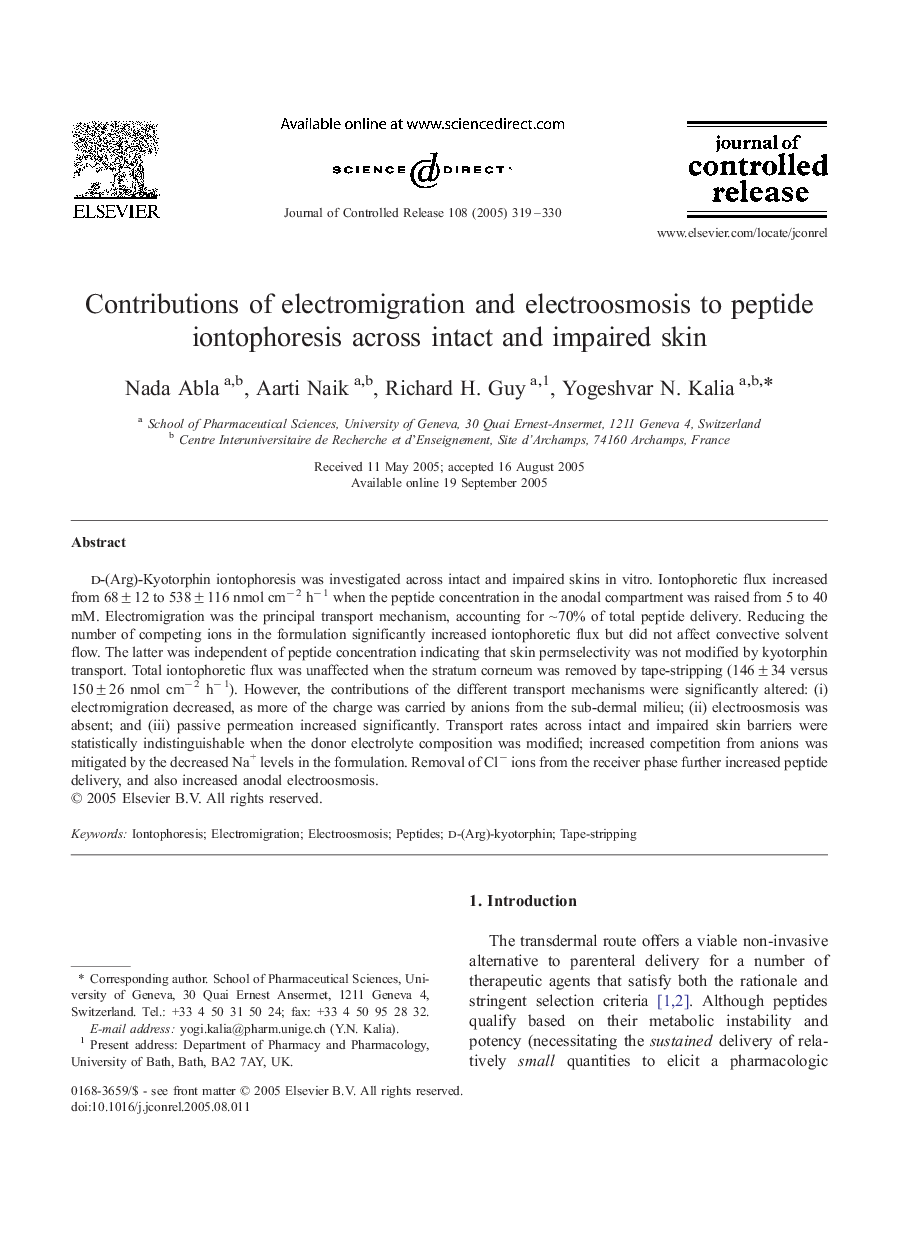| Article ID | Journal | Published Year | Pages | File Type |
|---|---|---|---|---|
| 9774620 | Journal of Controlled Release | 2005 | 12 Pages |
Abstract
d-(Arg)-Kyotorphin iontophoresis was investigated across intact and impaired skins in vitro. Iontophoretic flux increased from 68 ± 12 to 538 ± 116 nmol cmâ 2 hâ 1 when the peptide concentration in the anodal compartment was raised from 5 to 40 mM. Electromigration was the principal transport mechanism, accounting for â¼Â 70% of total peptide delivery. Reducing the number of competing ions in the formulation significantly increased iontophoretic flux but did not affect convective solvent flow. The latter was independent of peptide concentration indicating that skin permselectivity was not modified by kyotorphin transport. Total iontophoretic flux was unaffected when the stratum corneum was removed by tape-stripping (146 ± 34 versus 150 ± 26 nmol cmâ 2 hâ 1). However, the contributions of the different transport mechanisms were significantly altered: (i) electromigration decreased, as more of the charge was carried by anions from the sub-dermal milieu; (ii) electroosmosis was absent; and (iii) passive permeation increased significantly. Transport rates across intact and impaired skin barriers were statistically indistinguishable when the donor electrolyte composition was modified; increased competition from anions was mitigated by the decreased Na+ levels in the formulation. Removal of Clâ ions from the receiver phase further increased peptide delivery, and also increased anodal electroosmosis.
Related Topics
Physical Sciences and Engineering
Materials Science
Biomaterials
Authors
Nada Abla, Aarti Naik, Richard H. Guy, Yogeshvar N. Kalia,
